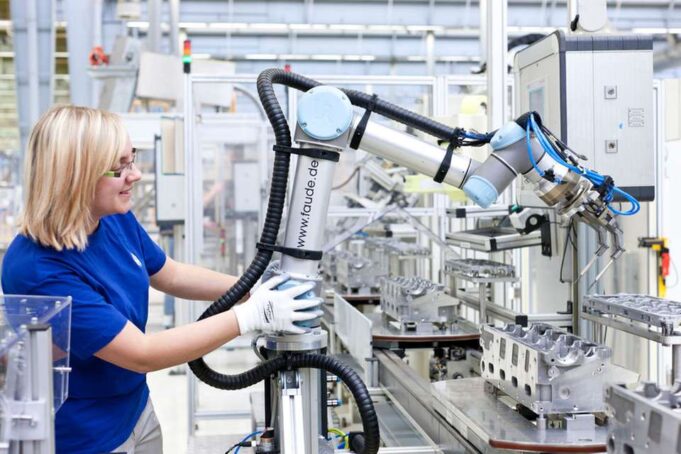A collaborative robot, or Cobot, is an automated solution that works alongside and with humans to complete tedious or physically hard activities, making their jobs lighter. It is designed to improve human-robot collaboration. Rather than replacing a person, a Cobot can collaborate with people, resulting in higher production and overall efficiency.
In terms of capabilities, robotics technologies rapidly improve, enhancing their potential and value. Because of functional constraints, organizations have traditionally had to confine robots to a single sector of their operations. Recent robotics breakthroughs have made versatility both possible and increasingly essential. A collaborative robot is leading the way in the search for multifunctional solutions as suggested by UniversalRobots.
Benefits of Cobots
Encourages Collaboration:
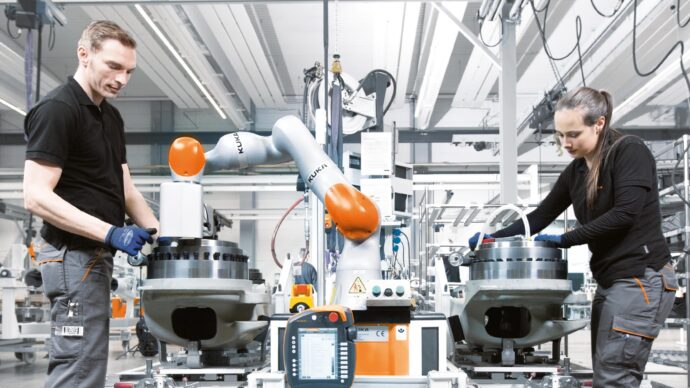
While this may seem self-evident, encouraging human-robot collaboration hasn’t always been simple or even safe. Cobots are advancing into technology that people who will utilize them can set up and configure.
Back-breaking, repetitive, and tedious work can be delegated to collaborative robots, allowing individuals to focus on tasks that need their knowledge and abilities. The underlying power of industrial Cobots is that they allow humans and robots to collaborate flexibly and versatility.
Easy to Setup and Program:
To remove any impediments to collaboration, a collaborative robot is designed to be simple to set up and program. Cobot applications may be configured for many jobs and workflows using its straightforward software, making it a versatile automated solution that can benefit many different sectors of industrial operations.
This adaptability is critical in the current Industrial era, where robot interoperability and automated technologies are becoming more mainstream.
Enhanced Consistency and Repeatability:
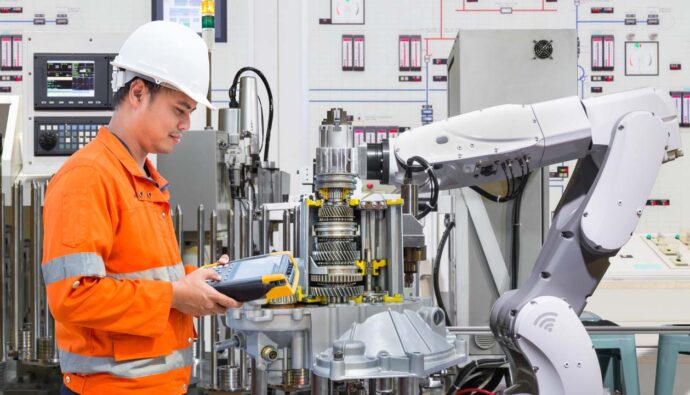
This is arguably the most significant advantage of any robot, but particularly collaborative robots. It is their ability to reliably do repetitive tasks without the hazards of repetitive motion injuries or exhaustion that humans suffer. People can accomplish more skilled workers and are less likely to become burned out or harmed by delegating these activities to cobots.
Improves Safety:
A collaborative robot serves to increase safety in the industrial setting in various ways. Traditional robot arms, such as those used in car factories, are incredibly powerful but cannot identify and avoid obstacles. To avoid mishaps, they needed to be separated from the public.
Collaborative robots can work alongside people safely, lowering the risk of major injury. As previously said, cobots are well-suited to repetitive, labor-intensive jobs, preventing individuals from performing chores that could result in damage and lost time. They can also keep people from dangerous machinery like forklifts by using artificial intelligence.
6 Collaborative Robot Application Trends
Its versatility and ease of usage fuels Cobots’ popularity. Manufacturers continue to develop new and innovative methods to deploy collaborative robots in their operations as the capacities of these automated devices evolve. In the industrial workspace, there are six significant Collaborative robot application trends.
1. Automated Picking:
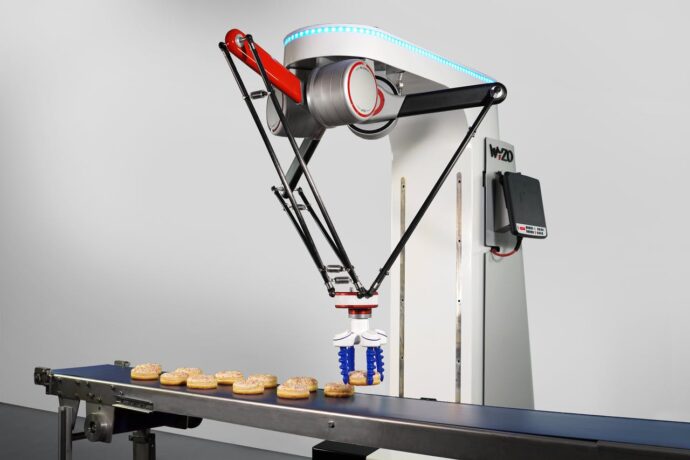
Automated picking is one of the most current and fascinating Cobots uses. Picking is a labor-intensive and time-consuming activity. Workers in fulfillment roles are projected to spend half of their workday picking, and this duty is becoming more crucial as ecommerce and fulfillment organizations’ experience continues to grow. Simultaneously, most of these businesses are having trouble finding enough personnel to meet their consumers’ expanding demands. To help enterprises deal with their persistent labor crisis, solutions with a collaborative robot embedded inside an unmanned mobile robot are being developed.
2. Assembly Line:
The Cobot arm is an excellent tool for the assembly line since it assists employees by doing various manual and repetitive tasks that can help speed up workflows. Furthermore, because collaborative robots are flexible, different components of assembly lines can be automated based on the requirements.
3. Machine Tending:
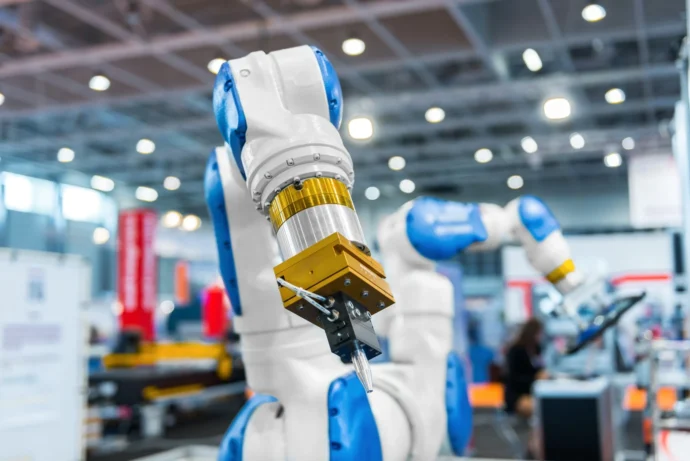
Human-machine tending entails feeding raw materials or parts into a device for processing, then removing those parts and sending them to the next manufacturing stage. Another excellent chance for a person to assign a repetitive duty to a robot.
Machine maintenance can be done by a robotic arm using a collaborative robot, allowing workers to focus on more skilled labor while increasing speed and output. A manufacturer stamping out parts that workers must inspect regularly is an example of this. While personnel inspects parts as needed, a mobile manipulator with a cobot arm mounted onto an unmanned mobile robot can tend to the machine.
4. Packing, Packaging, and Palletizing:
These are industrial operations that can leave employees physically exhausted and bored on the job. This is where robots come in: they help enhance output while also ensuring the safety of workers rushing to deliver products to clients.
Collaborative robot systems, such as AMRs with robotic arms, conveyors, or lift tables are helping to improve packaging and palletizing activities. Manufacturers and warehouses can adjust and change their shipping processes without affecting workflows by using these automated tools separately or jointly.
5. Material Handling:
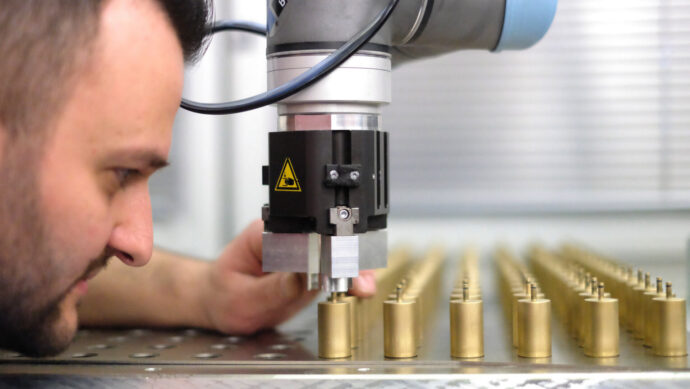
collaborative robots can undertake the most tedious, repetitive and hazardous operations on a production line. A collaborative robot with a large payload can boost efficiency, produce higher-quality products, and improve worker safety in manufacturing and warehouse environments. The best materials handling cobots work well with other automated systems in a facility, such as palletizing and packaging robots. A robotic platform or arm may easily connect with other robotics using interoperability, which helps automate a workflow further and maximize the overall speed of operational activity.
6. Automated Replenishment:
Raw material replenishment is another repeated task ideal for a collaborative robot. Automated replenishment of components for humans undertaking complex assembly processes or post-process inspection using a robot, such as a mobile manipulator, can considerably boost production speed.
A company with a machine that applies a coating or glue to a product, for example, would require someone to keep track of raw material levels and replenish them as needed. A cobot can be configured to supply the necessary pieces on a timetable, allowing no downtime and constant output while enabling the worker to concentrate on product inspection.
Bottom line
In essence, a collaborative robot can be thought of as an extra employee who assists industrial workers in increasing their output. Cobots do not replace workers; rather, they assist them in difficult and time-consuming jobs.

